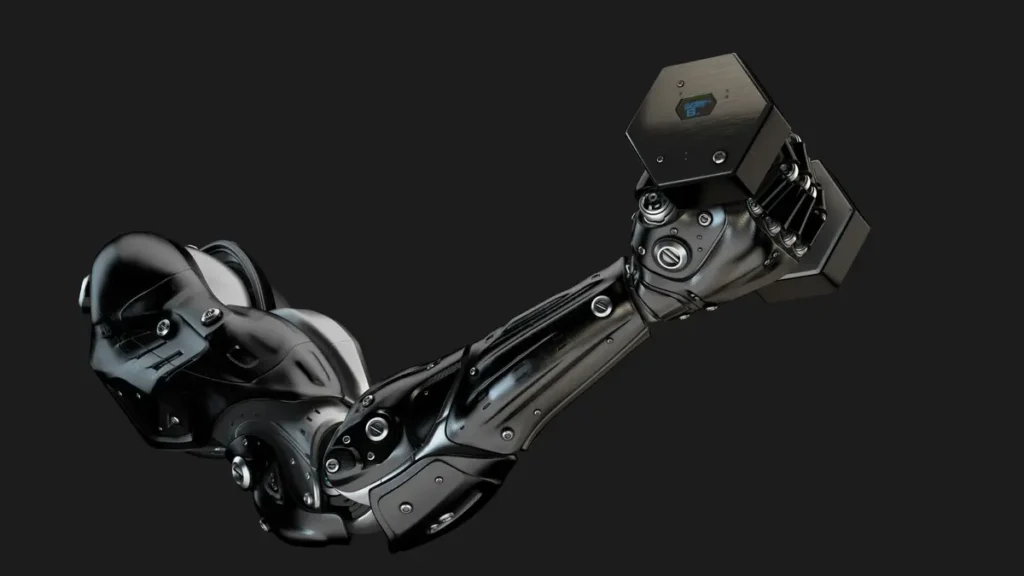In the rapidly evolving field of robotics, a new breakthrough has scientists and engineers captivated: magnetic muscles that are soft yet capable of lifting up to 1,000 times their own weight. These “muscles,” constructed from soft materials embedded with powerful magnets, represent a significant leap forward for applications in soft robotics and wearable technology. As researchers continue to push the boundaries of what robotics can achieve, this innovation in magnetic muscle technology promises to create safer, more adaptable, and versatile robotic systems.
From augmenting human strength with wearable suits to creating robots that can navigate environments previously inaccessible to traditional machines, magnetic muscles are redefining the possibilities in robotics. Here’s an in-depth look at how these magnetic muscles work, their potential applications, and the broader impact they may have on the fields of soft robotics and wearable technology.
Magnetic muscles are a type of actuator—a component that enables motion—in soft robotics, designed to mimic the flexibility and adaptability of human muscles. Traditional actuators, often made of rigid materials like metals or hydraulics, have limits in terms of flexibility and adaptability. Soft actuators, on the other hand, are made from flexible materials, allowing them to bend, twist, and conform to various shapes. Magnetic muscles add an extra dimension to this concept by embedding magnets in soft materials, allowing them to produce force without the need for hard structures.
The concept relies on powerful magnetic fields. When an external magnetic field is applied, these magnetic particles align in specific ways, creating movement and allowing the muscle to lift objects much heavier than its own weight. This “soft yet strong” property makes these muscles ideal for applications that require both high strength and adaptability, such as wearable suits for lifting heavy objects or robots that need to perform complex, delicate tasks.
At the core of this technology are two essential components: soft, elastomeric materials and magnetic particles embedded within them. The elastomeric material provides flexibility, while the magnetic particles are responsible for the muscle’s strength. By carefully distributing these particles within the material, researchers can create muscles that are both soft to the touch yet powerful enough to lift heavy loads.
The muscles work based on an external magnetic field that manipulates the magnetic particles, creating controlled, precise movements. This magnetic response enables the soft muscles to contract, stretch, or bend, depending on the field’s direction and intensity. By adjusting the magnetic field, engineers can control the movement and strength of the muscles, providing unparalleled flexibility and power. This unique approach allows for a high degree of customization, making these muscles adaptable to various applications.
The development of magnetic muscles has huge implications for the field of soft robotics, which focuses on creating robots that are flexible, adaptable, and safe for interacting with humans. Unlike traditional rigid robots, soft robots can move more naturally, handle delicate objects, and adapt to uneven surfaces, making them ideal for complex environments like disaster zones, underwater exploration, and even medical procedures.
With magnetic muscles, soft robots can achieve even greater functionality. Imagine a search-and-rescue robot with flexible limbs capable of maneuvering through debris, lifting heavy objects, or even stabilizing an injured person until help arrives. These magnetic muscles allow robots to have the strength to lift or manipulate heavy objects while remaining light and soft enough to navigate narrow or fragile spaces.
In the medical field, magnetic muscles could be used in robotic devices that assist with surgeries. For instance, these robots could perform delicate movements inside the body without causing damage to surrounding tissues. The combination of strength and flexibility allows for greater precision, which could lead to more minimally invasive procedures and faster patient recovery times.
Beyond robotics, magnetic muscles hold tremendous potential in wearable technology. Imagine an exoskeleton suit embedded with magnetic muscles, allowing the wearer to lift weights far beyond their natural capacity. Such technology could revolutionize industries like construction, manufacturing, and healthcare, where lifting heavy objects is a daily task and injuries from repetitive strain are common.
For people with mobility issues or disabilities, magnetic muscle-powered wearables could provide greater independence. Lightweight yet powerful assistive suits could help elderly individuals with basic tasks like walking, lifting, or even standing up from a seated position. These wearable devices could provide a more natural range of motion compared to current rigid exoskeletons, making them more comfortable and effective for daily use.
Athletes and fitness enthusiasts could also benefit from this technology, as wearable magnetic muscles could be used to provide resistance for training purposes or to prevent injuries. By augmenting human capabilities, these devices could support a variety of activities that require strength, endurance, or stability.
One of the less obvious but significant benefits of this technology is its environmental impression. Traditional robots and heavy machinery often rely on large amounts of metal, oil, and other resources. Magnetic muscles, on the other hand, are composed primarily of soft, elastomeric materials and small amounts of magnetic particles. This makes them more lightweight and less resource-intensive, reducing the environmental footprint of robotic devices.
Additionally, these soft robots and wearables could reduce the need for heavier, energy-intensive equipment in some applications. For example, in agriculture, soft robots with magnetic muscles could gently harvest crops without the need for larger, more rigid machinery. This approach could reduce soil compaction, lower fuel consumption, and minimize the impact on the environment.
While magnetic muscles are a promising innovation, there are still challenges to overcome before they become widely implemented. One of the main issues is the control of the magnetic field. To achieve precise movements and desired force outputs, researchers need to develop methods for creating consistent, controlled magnetic fields that can operate reliably over extended periods.
Another challenge is durability. While magnetic muscles are strong, they are also subject to wear and tear, particularly in demanding environments. Researchers are exploring ways to make these muscles more durable, potentially through advanced materials that are more resistant to environmental factors like moisture, temperature fluctuations, and repetitive stress.
In terms of wearable technology, magnetic muscles also need to be optimized for comfort and efficiency. Ensuring that wearables powered by magnetic muscles are lightweight, breathable, and easy to operate is crucial for user acceptance, especially in settings where the wearer may need to use the device for extended periods.
The integration of powerful, magnetic muscle-driven technology into wearable devices and robotics brings ethical considerations. For example, who would be responsible if an assistive suit malfunctioned and caused an injury? How should society regulate the use of such technology to ensure it’s used ethically and safely?
Moreover, if this technology is introduced into fields like construction, manufacturing, or even medical assistance, it may displace some human jobs. The societal impact of machines replacing human labor—particularly in roles that require physical strength—raises important questions about workforce adaptation, skills retraining, and economic impacts.
As research continues, the potential applications of magnetic muscles will likely expand, from domestic robots that can help with household chores to medical devices that provide rehabilitative support. The possibility of lightweight, adaptable, and powerful machines could transform how we interact with technology, whether at work, home, or in healthcare settings.
Imagine a future where seniors are equipped with discreet, wearable support systems that help them move confidently, where delivery robots navigate crowded streets seamlessly, and where medical robots perform intricate procedures with precision. As magnetic muscles become more refined, these scenarios may shift from science fiction to everyday reality.
The development of soft, magnetic muscles that are as strong as steel yet as adaptable as human skin represents a paradigm shift in both robotics and wearable technology. By offering unprecedented strength and flexibility, these muscles open the door to new possibilities in various industries, from healthcare and construction to consumer electronics.
As researchers address technical challenges and refine this technology, magnetic muscles are likely to become an integral part of the robotics landscape. They hold the promise of safer, more efficient, and more environmentally friendly robots and wearable devices that can enhance human capabilities, improve daily life, and reduce the impression on our planet.
No comments yet.








